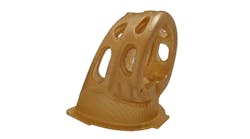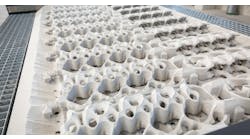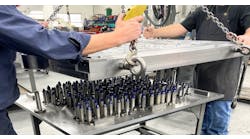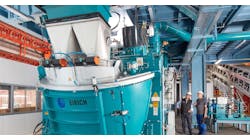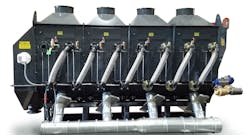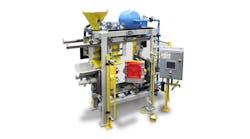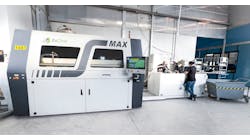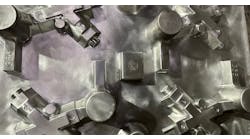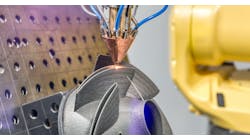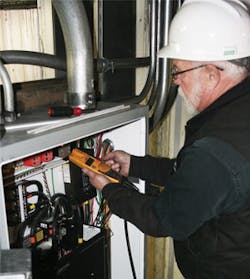There are many good reasons for foundries to consider buying used equipment. Many times the cost of new equipment is unaffordable, or a particular machine is needed for special purpose or intermittent use. In these cases, used equipment is a logical consideration. But, there is a series of factors that must be evaluated before a final decision to buy used equipment.
Price. Cost needs to be used as a benchmark when sourcing used equipment. Simply stated, you need to know what a new piece of equipment costs before even starting to look for used equipment. It doesn’t matter if you’re looking for a 5-ton/hour bucket elevator, or a complete foundry, you must have some standard for comparison in your final selection. This determination sets the maximum amount for new equipment that you are willing to pay, based on the following criteria.
Time. It’s common for metalcasting buyers to make on-site visits to various locations where used equipment is available, to inspect the merchandise as installed — and yet not consider the costs of these efforts beyond the price of fuel or flights. Anyone that is qualified to inspect and decide on a major purchase has value beyond used-equipment inspection. Obviously, that person’s salary is allocated in overhead calculations, but there is also a direct cost associated with time that should be applied to the final cost of a piece of used equipment.
What does it cost for a manager or critical personnel to be out of the plant for days at a time? What could this person be doing to generate profit instead of sitting in a car or plane?
Inspection. Used foundry equipment dealers are sometimes accused of dishonesty or deception, and this simply isn’t true. Inspecting a piece of equipment is a big responsibility and that responsibility is yours entirely.
In addition, authorizing any equipment purchase is a big deal. You wouldn’t purchase a $50,000 car after looking at just a few photos. You would want the car’s mileage and maintenance history, and you’d want to take a test drive.
Buying used equipment is no different. If you purchase a used machine and haven’t seen it with your own eyes, or through the eyes of someone qualified to inspect it, you have no one to blame but yourself if you are disappointed with the result. We are familiar with phrases like “where is – as is,” or caveat emptor (let the buyer beware). Used equipment purchases prove these truisms.
Condition. I am always amazed when a metalcaster claims to have gotten a “good deal“ on used equipment, and then spends days, weeks, or months trying to get it running correctly. They tie up production time as well as plant personnel that could (and should) be doing other things. It is common to see a used piece of equipment in the maintenance shop with a number of maintenance workers crowded around trying to get it running. We all know maintenance is never ending in a foundry and qualified maintenance people are rare. You really don’t save much money if production line goes down due to lack of maintenance. Sometimes, you can’t afford to save money!
In addition, maintenance personnel are usually the most expensive people on the production floor. The person inspecting used equipment needs to be intimately familiar with the equipment they are inspecting. They also should be able to recognize the components that need to be replaced, what structure needs to be rebuilt, controls that require updating, etc., and be able to at least estimate those costs.
Many times a machine is mechanically sound but the controls need to be updated completely, not only for the machine to function correctly but also to integrate to the plantwide operating system. Controls (and programming) in general can be quite expensive.
Rigging. Small items are easily put on a truck or shipped, but larger items need to be disassembled, carefully packaged, set on the truck, tied down, and tarped. Depending on the location, this process can require cranes and forklifts as well as qualified personnel. Many times this expense is considered a shipping expense. How often do we hear “shipping isn’t in my responsibility"?
Shipping seems to be one of those areas not considered, as it somehow belongs in another department’s budget or area of responsibility.
Disassembly is a critical function, too. If not done correctly, machines can be disassembled with the “blue wrench” (cutting torch), and wiring and plumbing can be disconnected with a hacksaw, which adds a huge amount to the cost of reassembly.
And, reassembly costs can be substantial. A good example of this are sand storage silos. If you order a new silo, you get exactly what you want when you want it. If you compare the cost of rigging and transport of a silo, a few hundred or thousands of miles away, you would have to get the silo for free to justify the expense!
Shipping. The cost of shipping new versus used equipment is roughly the same, but the location could easily add to the cost. Many times new equipment will be packaged in such a way that it can be shipped by common carrier instead of a dedicated truck, which may be thousands of dollars less, depending on location.
Defining Used Equipment. Reworked, refurbished, rebuilt, good operating condition, ready to run, was running when removed from service – are all these terms are used rather interchangeably to describe used equipment. The definition depends on whether you are the buyer or the seller.
When you add up all the true, direct costs associated with a specific piece of used equipment, you can make the decision to buy new or used. But, always keep in mind that after all the above, you still have a piece of used equipment!
Used equipment has no warranty, and usually has been worked and changed by a number of people throughout its life. These changes are almost never documented in the operational manual or controls schematics, thereby rendering them almost useless.
Palmer is a new equipment manufacturer and a reseller of used equipment. We constantly source good used equipment for customers as well as for our own inventory to rebuild for use in future projects and always inspect, or have a “no charge right of refusal“ after shipping the equipment to our plant. We buy only equipment that we are qualified to inspect. If we are not familiar with the equipment, we hire someone qualified to inspect it, or we don’t buy it. Guessing and hoping are expensive strategies that we don’t recommend.
There are times when used equipment makes good fiscal sense, and there are times when it makes no sense. A good manager will know the difference, and when to walk and when to buy.
